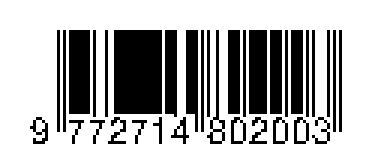MATHEMATICAL MODELING FOR THE EXTRACTION OF URANIUM AND MOLYBDENUM WITH EMULSION LIQUID MEMBRANE, INCLUDING INDUSTRIAL APPLICATION AND COST EVALUATION OF THE URANIUM RECOVERY
DOI:
https://doi.org/10.34151/technoscientia.v0i0.1985Keywords:
emulsion liquid membrane, uranium, molybdenum, mathematical modeling, D2EHPA, mass transfer, span 80, batch process, recovery, costAbstract
Emulsion liquid membrane systems are double emulsion drops. Two immiscible phases are separated by a third phase which is immiscible with the other two phases. The liquid membrane systems were classified into two types: (1) carrier mediated mass transfer, (2) mass transfer without any reaction involved. Uranium extraction, molyb-denum extraction and solvent extraction were used as purposed elements for each type of the membrane systems in the derivation of their mathematical models. Mass transfer in emulsion liquid membrane (ELM) systems has been modeled by several differential and algebraic equations. The models take into account the following : mass transfer of the solute from the bulk external phase to the external phase-membrane interface; an equilibrium reaction between the solute and the carrier to form the solute-carrier complex at the interface; mass transfer by diffusion of the solute-carrier complex in the membrane phase to the membrane-internal phase interface; another equilibrium reac-tion of the solute-carrier complex to release the solute at the membrane-internal phase in-terface into the internal phase.Models with or without the consideration of film resistances were developed and compared. The models developed in this study can predict the extraction rate through e-mulsion liquid membranes theoretically. All parameters required in the models can be de-termined before an experimental extraction run. Experimental data from literature (urani-um extraction) and (molybdenum extraction and solvent extraction) were used to test the models. The agreements between the theoretical predictions and the experimental data were very good. The advantages of emulsion liquid membrane systems over traditional methods were discussed. The models developed in this research can be used directly for the design of emulsion liquid membrane systems. The results of this study represent a very significant step toward the practical applications of the emulsion liquid membrane technology.







